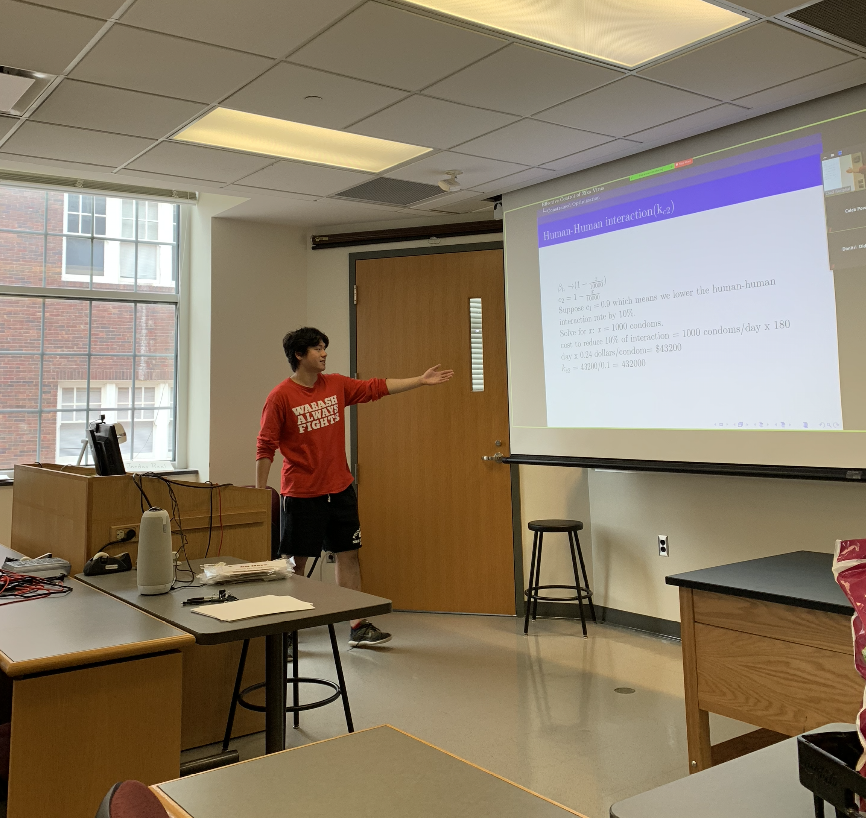
Cihang Wang ’23 — This summer, I worked as a research intern under Dr. Westphal. Our research topic was A Mathematical Model for Zika Virus Disease: Intervention methods for Control of Affected Births. While not particularly dangerous for most healthy adults who get infected with the disease, Zika has been linked to an increased incidence of developmental abnormalities- including microcephaly – for infants born to mothers infected during early pregnancy.
Since Dr. Westphal has started this project a few years ago and successfully developed a compartmental model for the spread pattern of the disease, we used this model as our foundation. In the beginning, we calculated the basic reproductive number to determine the likelihood of the outbreak of the disease in a community. The basic reproductive number helps us to have a general idea of what would happen once some infected vectors are introduced into a disease-free community. Then we use the sensitivity analysis to determine factors that could prevent the outbreak. However, while knowing how to prevent the outbreak is essential, it is also important for us to know the effective control method during the outbreak to minimize the damage caused by the virus. Several factors help us determine the trend of an outbreak, such as human-human interaction rate, human-vector interaction rate, etc. Since it was impossible to calculate the result by hand, we used python to write many programs for simulation purposes. We also use data analytic packages, such as Panda, Plotly, and NumPy, to graph and study how each input parameter impacts the output of our model – the number of total infected babies. During the process of sensitivity analysis, we used Latin Hypercube Sampling and Partial Rank Correlation Coefficient to determine the most important factors during the outbreak that lead to an increased number of infected babies. Knowing the general picture of the outbreak, we then applied a combination of gradient descent and global sampling methods to develop several cost-effective policy methods given a limited amount of funding.
As a math-major student, this research opportunity gave me a chance to apply what I have learned to a more practical field. I also have a much deeper understanding of math topics such as linear algebra, differential equations, and multivariable calculus. I have also become a stronger programmer and more familiar with the python programming language. Our mandatory weekly progress report also let me learn how to share our research with a group of people. I believe I have become more confident in giving academic talks and organized my presentation in a much concise and clear way.
Finally, I want to thank the Wabash College Department of Mathematics & Computer Science and Dr. Westphal for providing me this research opportunity. This experience gives me a lot of the first-hand experience in academic research and how to share progress and result in a report.